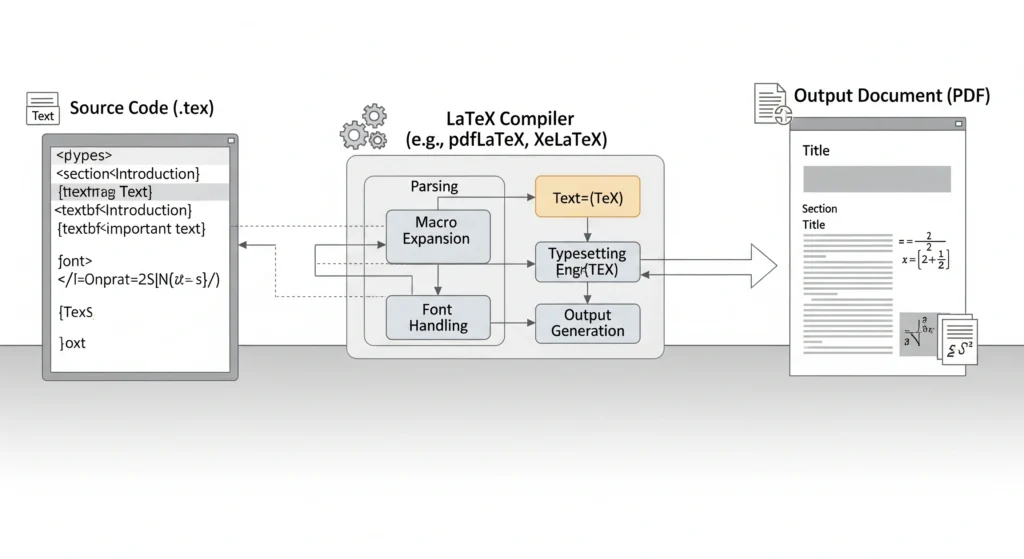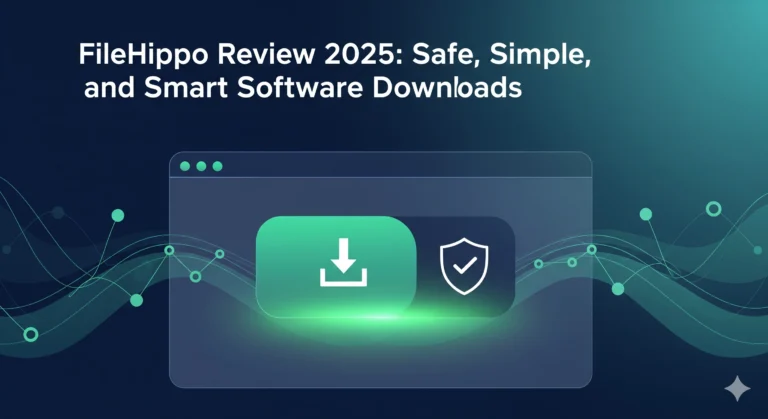LaTeX Software: Everything You Need to Know to Get Started
If you’ve ever struggled with formatting a thesis, research paper, or technical document in Word, you’ll understand why so many people swear by LaTeX software. Unlike traditional word processors where formatting often turns into a nightmare, LaTeX lets you focus on your content while the system takes care of presentation.
Think of it as writing with structure in mind—you tell LaTeX what your content is (a title, a section, an equation), and it decides how it should look. That’s why it has become the go-to tool for academics, researchers, and professionals who need clean, consistent, and publication-ready documents.
In this guide, I’ll walk you through what LaTeX is, how it works, its standout features, how to install it, and how it compares with coding and HTML.
What Exactly Is LaTeX Software?
LaTeX (pronounced “Lay-tech” or “Lah-tech”) isn’t your average word processor—it’s a document preparation system built on top of TeX, the typesetting engine created by Donald Knuth back in the 1970s. Later, Leslie Lamport developed LaTeX to make TeX more user-friendly by adding predefined commands and structures.
Here’s the big idea:
- You write your content in plain text with simple markup commands.
- LaTeX handles the formatting, whether it’s equations, references, or page layouts.
The result? Professional-looking documents that are consistent and error-free. Whether you’re preparing a dissertation, journal submission, or even a presentation, LaTeX gives you a level of polish that Word or Google Docs can’t match.
How LaTeX Software Works (And Why It Feels Different)

At first, using LaTeX can feel unusual because you’re not dragging and dropping or clicking “bold” and “italic” buttons. Instead, you write commands in a .tex file and compile it into a polished PDF.
Here’s a simple workflow:
- Write your source file – Use an editor like TeXstudio, Texmaker, or Overleaf, and save your text with a
.texextension. - Compile the document – A LaTeX distribution (like MiKTeX on Windows or TeX Live on Linux/macOS) processes the file.
- Review and tweak – If something looks off, you edit the source and recompile.
- Export the final PDF – Share it, publish it, or submit it without worrying about formatting errors.
Yes, it takes a little practice. But once you get the hang of it, you’ll realize how much time it saves compared to fixing messy formatting in Word.
Key Features That Make LaTeX Stand Out
So why do so many professionals stick with LaTeX even though it looks intimidating at first? Because it offers features that word processors can’t compete with:
- Mathematical precision – Perfect for complex equations, formulas, and notations.
- Citations made simple – Tools like BibTeX and BibLaTeX manage references automatically.
- Cross-referencing – Easily link sections, figures, and tables without manual numbering.
- Professional templates – Ready-to-use layouts for research papers, CVs, presentations, and more.
- Custom commands – Define shortcuts and formatting rules that suit your style.
- Cross-platform flexibility – Works on Windows, macOS, Linux, and even in the cloud.
- Collaboration – Online platforms like Overleaf let teams edit in real-time, with version history built in.
In short: LaTeX isn’t just about writing, it’s about writing smarter.
Installing LaTeX Software: A Quick Guide
Worried installation might be tricky? Don’t be. Here’s a simple breakdown depending on your setup:
- Windows (MiKTeX):
- Download MiKTeX from its official website.
- Run the installer and follow the prompts.
- Add an editor like TeXstudio for a smoother writing experience.
- Linux & macOS (TeX Live):
- Install TeX Live from the official site or through your package manager.
- Add a LaTeX editor such as TeXworks or Texmaker.
- Online (Overleaf):
- Sign up for free at Overleaf.com.
- Start creating LaTeX projects directly in your browser—no installation required.
Conclusion
LaTeX software may look intimidating at first glance, but once you understand the workflow, it’s a game-changer for creating structured, professional-quality documents. Whether you’re a student writing a thesis, a researcher handling dozens of citations, or a professional preparing technical documentation, LaTeX ensures accuracy, consistency, and elegance every time.
And the best part? It’s free, open-source, and supported across platforms. So if you’re tired of fighting with Word’s formatting quirks, maybe it’s time to give LaTeX a try.
FAQs
Q1. What is LaTeX software used for?
LaTeX software is mainly used to create professional documents, especially research papers, theses, technical reports, and academic articles with complex formatting.
Q2. Is LaTeX free to use?
Yes, LaTeX is completely free and open-source. Distributions like MiKTeX and TeX Live, along with platforms like Overleaf, also offer free access.
Q3. Do I need coding skills to use LaTeX?
No, LaTeX isn’t programming. It uses simple markup commands to format documents. With a little practice, anyone can learn it.
Q4. Which LaTeX distribution should I install?
For Windows users, MiKTeX is a popular choice. For Linux and macOS, TeX Live works best. Beginners can start with Overleaf since it requires no installation.
Q5. Is LaTeX better than Word for academic writing?
Yes. Unlike Word, LaTeX ensures consistent formatting, accurate equations, automated references, and professional layouts ideal for academic writing.







